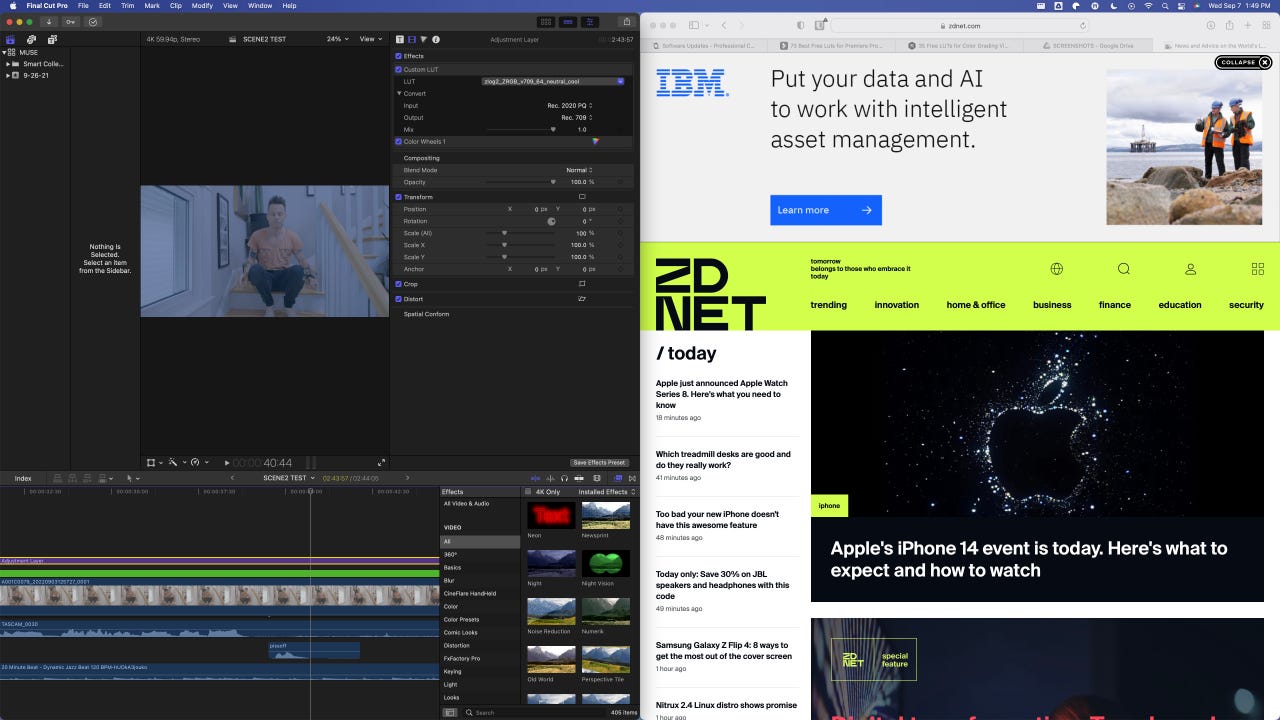'ZDNET Recommends': What exactly does it mean?
ZDNET's recommendations are based on many hours of testing, research, and comparison shopping. We gather data from the best available sources, including vendor and retailer listings as well as other relevant and independent reviews sites. And we pore over customer reviews to find out what matters to real people who already own and use the products and services we’re assessing.
When you click through from our site to a retailer and buy a product or service, we may earn affiliate commissions. This helps support our work, but does not affect what we cover or how, and it does not affect the price you pay. Neither ZDNET nor the author are compensated for these independent reviews. Indeed, we follow strict guidelines that ensure our editorial content is never influenced by advertisers.
ZDNET's editorial team writes on behalf of you, our reader. Our goal is to deliver the most accurate information and the most knowledgeable advice possible in order to help you make smarter buying decisions on tech gear and a wide array of products and services. Our editors thoroughly review and fact-check every article to ensure that our content meets the highest standards. If we have made an error or published misleading information, we will correct or clarify the article. If you see inaccuracies in our content, please report the mistake via this form.
How to get true window snapping in MacOS

One of the most important aspects of a desktop for me is efficiency. I need an OS that makes it easy for me to work with multiple windows open in such a way that is effortless and painless. The MacOS desktop is an outstanding option for users of all types. It's elegant, simple to use, and rock solid.
Also: The best Macs: Which is right for you?
However, there's always been one glaring issue I've had with the MacOS UI and that is the sad attempt at window snapping it offers. Out of the box, not only is window snapping limited, it's awkward to use. That's why I set out to find a solution that not only made it easier but offered true window snapping for MacOS.
What is window snapping?
Window snapping makes it possible for you to drag a window to the edge of your display (right, left, top, or bottom) and the window will automatically snap to that edge so it only takes up a certain area of the display. For example:
- Drag a window to the right edge and it will automatically take up the right half of the display.
- Drag a window to the left edge and it will automatically take up the left half of the display.
- Drag a window to the top edge and it will automatically take up the full display.
Most good window managers allow for the customization of snapping actions. Unfortunately, MacOS default only allows you (through a cumbersome window button action) to snap right or left.
Also: Apple just quietly future-proofed last year's 13-inch MacBook Air, and it's a big deal
Thankfully, there's a very handy app that allows you to add more traditional window snapping to MacOS. That app is called Rectangle. The app works on both Intel and Apple Silicon devices.
One thing to keep in mind, however, is that if you use both Rectangle for window snapping and Stage Manager, you won't get full-screen resizing that should be presented when dragging a window to the top edge. Instead, the window will resize to take up the full display, minus the space required for the Stage Manager icons. You still get window snapping, but Stage Manager blocks full-sized windows on the display.
Installing Rectangle
What you'll need: The only thing you'll need for this is a MacOS device, such as a MacBook Pro/Air or an iMac.
Step 1: Download the installer
Open your default web browser and point it to the Rectangle GitHub page. Download the app from there.
Step 2: Install Rectangle
When the file has finished downloading, double-click on it to open the installer window. With the installer window open, drag the Rectangle icon into the Applications folder.
Installing Rectangle on macOS Monterey.
Configuring Rectangle
Step 1: Open Rectangle
Open Launchpad and type Rectangle. Click on the launcher to open the Rectangle application. When prompted, click Open to allow the running of the app.
Step 2: Open System preferences
For Rectangle to function properly, you must give the app the proper permissions. When the app opens, you'll be prompted to click Open System Preferences.
The first window you'll see when you initially open Rectangle.
Step 3: Authorize Rectangle
When the System Preferences app opens, click the lock icon in the lower left corner and type your user password. With Security & Privacy unlocked, click the checkbox associated with Rectangle and then, in the resulting popup window, click Recommended and then close the System Preferences window (you can also close out the Rectangle installer at this point).
Giving Rectangle the necessary permissions to function properly.
Step 4: Configure Rectangle
After giving the app the proper permissions, the Rectangle configuration window will open, where you can configure each shortcut exactly how you like it.
Configure Rectangle to your liking here.
Using Rectangle
After configuring the app, close out the Settings window and you can now drag open windows to the edges or corners to snap them in place. This is exponentially easier than having to remember convoluted keyboard shortcuts or the awkward title bar button.
Also: This $75 dock turns your Mac Mini into a Mac Studio (sort of)
So far, Rectangle has proven to be the simplest method of snapping windows in MacOS that I've found. Kudos to the developer for creating the app. And remember, if you enjoy using Rectangle, consider offering a donation to the developer.
Enjoy that newfound window snapping on your MacOS devices.
